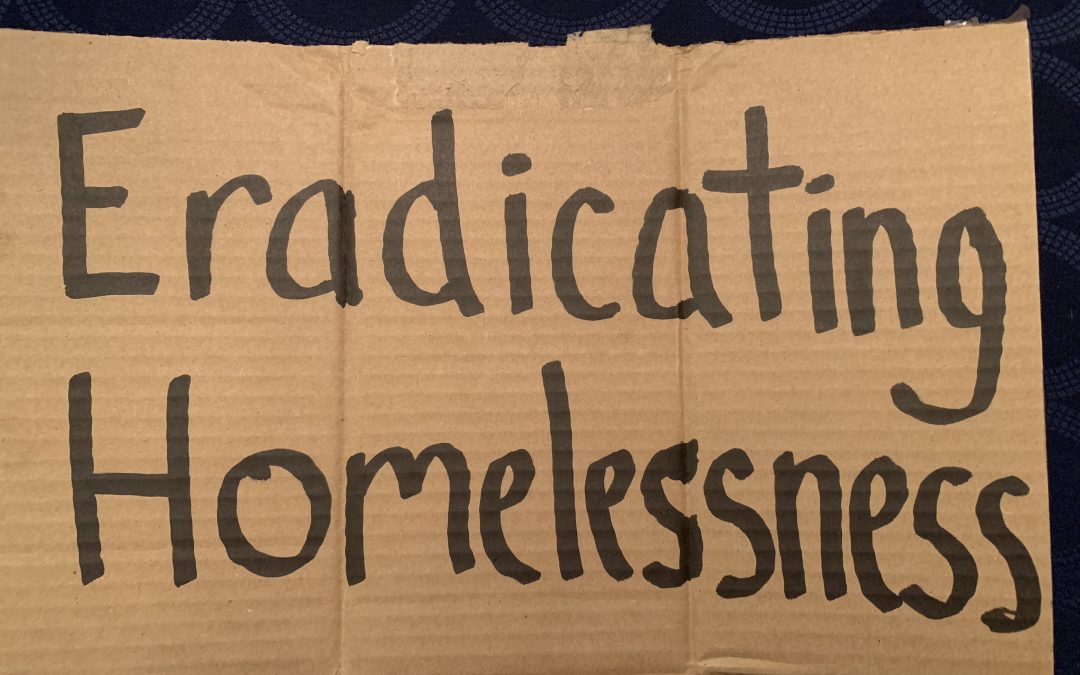Now that we are up to speed on the factual and experiential reality of homelessness, we can turn our attention to ending it. First, we must acknowledge that there have been many strides made in the right direction already — veteran homelessness dropping 50 percent in the last decade, for example. Overall, however, the only slight reductions in homelessness nationwide are not enough. As a nation, our consciousness must shift from merely “managing” homelessness to ending it. This implies looking at the issue systemically, and making adjustments to the system on a foundational level rather than putting a band-aid on the problem. It is difficult to work with both the unique needs of a family or individual as well as the vast structural issue. On a structural level, there are many causes for homelessness: lack of affordable housing, wage stagnation, the wealth gap, institutional racism, and inadequate health and social services for those in poverty. We must acknowledge that our work to end homelessness must incorporate micro- and macro-lenses — aiding those who are homeless now and taking measures to prevent homelessness in the future.
There are four components to successfully and sustainably eradicating homelessness.
1. Housing
Homelessness is fundamentally defined by a lack of housing, and thus it is housing that is the essential foundation for ending homelessness. Housing provides people with the safety, security, and general foundation to find and maintain a job, address mental illness and substance abuse, stay healthy, and benefit the community.
The housing issue has persisted since the early 1980’s. The Reagan administration cut funding for low-income housing, causing a shortage of millions of affordable housing units. To this day, the lack of affordable housing units is the basis for the persisting issue of homelessness in America.
If we expect to end homelessness, we need a massive national commitment—public and private—to ensure affordable housing for all. Housing is a basic human right — it is the very foundation from which people can get back on their feet and lead positive lives. If we expect to end homelessness, housing is the fundamental starting place.
2. Services
Housing is vital, but not sufficient in and of itself. The other side of the security that housing provides is attention to physical/psychological health, employment, education, and other services. These services get at the root issues of homelessness for each particular individual and prevent them from squandering opportunities.
Services, while pricey, are actually an investment. Providing healthcare and education not only prevents emergency room visits, jail fees, and other cost burdens, but allows people to be positive members of society.
In digging up the root causes of homelessness, it is crucial that we match housing with services. They are two sides of the same coin and provide a foundation for sustainable change.
3. Social Systems
Of the many ‘homeless’ people I have spoken to, community is consistently atop their hierarchy of ‘things that matter’. Many of these people have developed connections, friendships, and partnerships with other people in similar shoes. To transition them into permanent housing situations without acknowledging how this messes with their relationships is inconsiderate.
Not only must we empathize with these people’s situations, but we must also have compassion. Countries like Scotland and Denmark have developed strategies for social inclusion — strategies that work to actively destigmatize mental illness, substance abuse disorders, homelessness and poverty. As long as we are maintaining an “us vs. them” mentality with regards to homelessness, we will continue to de-humanize these people and further cast them out from society.
Creating a strategy for social inclusion and social connectedness must be part of our thinking in our work to end homelessness. It is an opportunity to reflect on our own projections as well.
4. Prevention
We have the resources and capital to initiate systems that prevent homelessness. Yet, currently, we prefer down-stream solutions that save people at the last minute. It is wiser and more efficient to prevent homelessness altogether. This, however, requires a big view that can span multiple systems — housing, healthcare, education, welfare, criminal justice, employment and much more. First understanding the pathways into homelessness and working from there to prevent people from slipping too deep down these paths. Going as far upstream as possible to support people and families and help them maintain stability — financially, emotionally, and otherwise.
If not us, then who? If not now, then when? The tools are there, the money is there, the people-power is there — it is only a matter of committing our collective effort to this issue — convincing politicians that this is an area worth their time and money.
Conclusion
These four tenets together encapsulate the path to eradicating homelessness. Cultivating the awareness, empathy, and skillful means, we are capable of having a tremendous impact on the system and re-shaping it for the future. See the other posts in this section for more hands-on ways to get involved!

